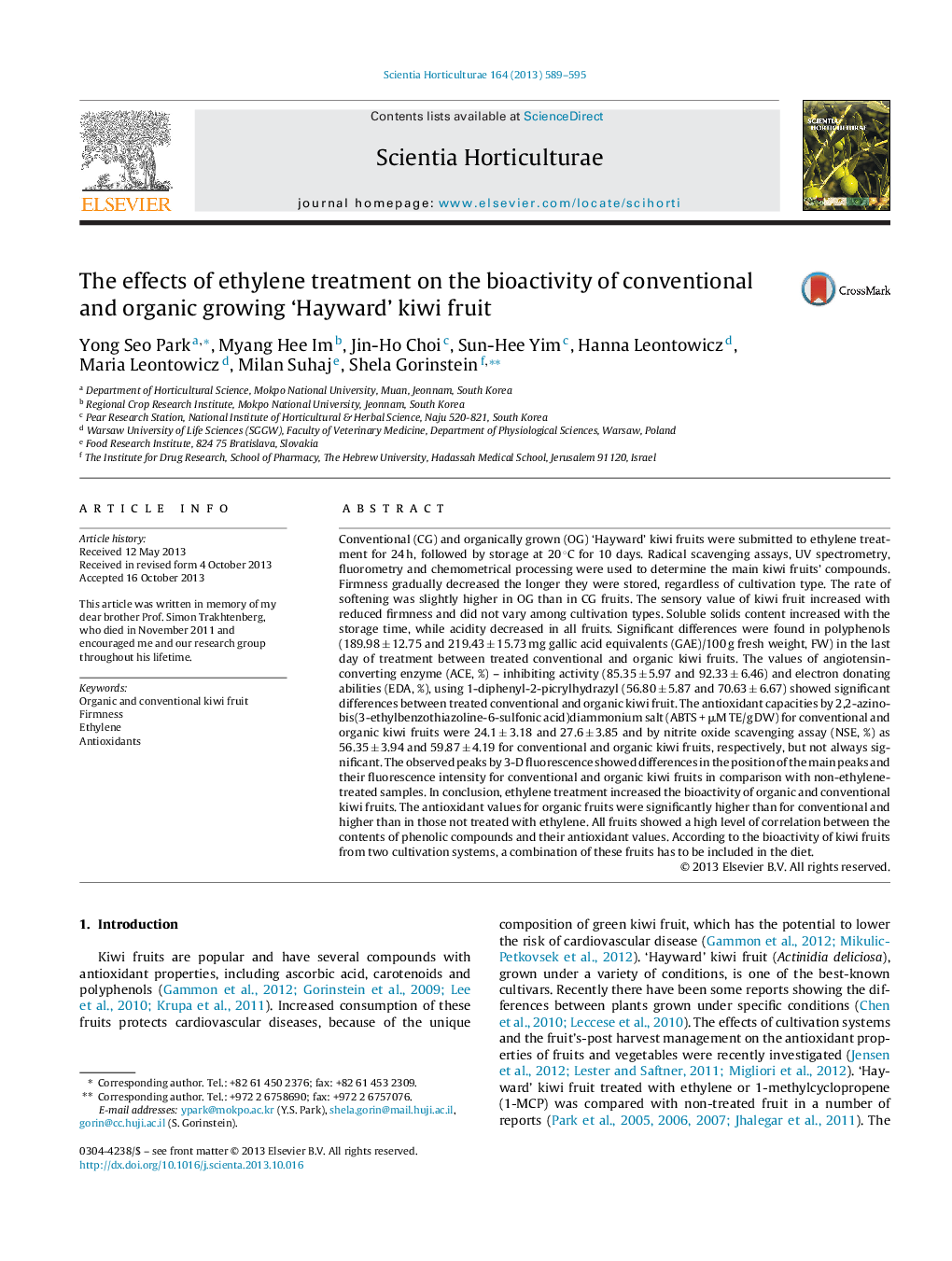| کد مقاله | کد نشریه | سال انتشار | مقاله انگلیسی | نسخه تمام متن |
|---|---|---|---|---|
| 4567111 | 1628834 | 2013 | 7 صفحه PDF | دانلود رایگان |

• Ethylene treatment increases the quality of kiwi fruit ‘Hayward’.
• Antioxidant properties of organically grown kiwi fruit are higher than that of conventionally grown kiwi fruit.
• Fluorescence and antioxidant assays applicable for quality fruits determination.
• Both fruits can be recommended for daily consumption.
Conventional (CG) and organically grown (OG) ‘Hayward’ kiwi fruits were submitted to ethylene treatment for 24 h, followed by storage at 20 °C for 10 days. Radical scavenging assays, UV spectrometry, fluorometry and chemometrical processing were used to determine the main kiwi fruits’ compounds. Firmness gradually decreased the longer they were stored, regardless of cultivation type. The rate of softening was slightly higher in OG than in CG fruits. The sensory value of kiwi fruit increased with reduced firmness and did not vary among cultivation types. Soluble solids content increased with the storage time, while acidity decreased in all fruits. Significant differences were found in polyphenols (189.98 ± 12.75 and 219.43 ± 15.73 mg gallic acid equivalents (GAE)/100 g fresh weight, FW) in the last day of treatment between treated conventional and organic kiwi fruits. The values of angiotensin-converting enzyme (ACE, %) – inhibiting activity (85.35 ± 5.97 and 92.33 ± 6.46) and electron donating abilities (EDA, %), using 1-diphenyl-2-picrylhydrazyl (56.80 ± 5.87 and 70.63 ± 6.67) showed significant differences between treated conventional and organic kiwi fruit. The antioxidant capacities by 2,2-azino-bis(3-ethylbenzothiazoline-6-sulfonic acid)diammonium salt (ABTS + μM TE/g DW) for conventional and organic kiwi fruits were 24.1 ± 3.18 and 27.6 ± 3.85 and by nitrite oxide scavenging assay (NSE, %) as 56.35 ± 3.94 and 59.87 ± 4.19 for conventional and organic kiwi fruits, respectively, but not always significant. The observed peaks by 3-D fluorescence showed differences in the position of the main peaks and their fluorescence intensity for conventional and organic kiwi fruits in comparison with non-ethylene-treated samples. In conclusion, ethylene treatment increased the bioactivity of organic and conventional kiwi fruits. The antioxidant values for organic fruits were significantly higher than for conventional and higher than in those not treated with ethylene. All fruits showed a high level of correlation between the contents of phenolic compounds and their antioxidant values. According to the bioactivity of kiwi fruits from two cultivation systems, a combination of these fruits has to be included in the diet.
Figure optionsDownload as PowerPoint slide
Journal: Scientia Horticulturae - Volume 164, 17 December 2013, Pages 589–595